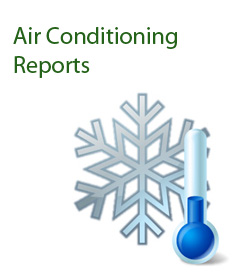There are two categories of Energy Assessors for Air Conditioning Inspections:
• Air Conditioning Inspections for simple systems between 12 and 250kW (equivalent to NOS level 3),
• Air Conditioning Inspections for complex systems exceeding 250kW (equivalent to NOS level 4). These Energy Assessors will also be accredited to undertake simple systems.
The Regulations currently require all air conditioning systems over 250kW to have had their first inspection and regular inspections to take place at least every 5 years thereafter. Smaller systems over 12 kW must have their first inspection by 4 January 2011 with regular inspections to follow.
The Sterling Accreditation Scheme, and the processes that support it, have been developed to provide Assessors with the support they need to ensure a consistently high quality product. They will be provided with a comprehensive membership package and all the support they need to operate in a fast moving and highly technical area.
Ensuring that air conditioning is properly sized for the building requirements and maintained to function efficiently can have a large effect on the amount of energy used.
Many buildings in both the commercial sector and, now increasingly, homes have air conditioning. These systems should be carefully maintained and managed in order that they do not consume too much energy.
When air conditioning inspections are required
All air conditioning systems with an effective rated output of more than 12kw must be regularly inspected by an energy assessor. The inspections must be no more than five years apart.
The regulations require the first inspection of the affected air conditioning systems to be carried out as follows:
•for all systems first put into service on or after 1 January 2008, the first inspection must have taken place within five years of the date when the system was first put into service
•for other air conditioning systems, where the effective rated output is more than 250kW the first inspection must have taken place by 4 January 2009
•for other air conditioning systems, where the effective rated output is more than 12kW the first inspection must have taken place by 4 January 2011
Systems requiring an air conditioning inspection
Only air conditioning systems with an effective rated output of more than 12kW are affected by these regulations. This will include systems consisting of individual units which are less than 12kW, but whose combined effective rated output is more than 12kW.
The effective rated output is the maximum calorific output in kW stated by the manufacturer of the system as delivered during continuous operation while complying with the useful efficiency indicated by the manufacturer.
One or more air conditioning units within a building controlled by a single person are considered to comprise a single air conditioning system for the purposes of the regulations.
‘Air conditioning system’ means a combination of all components required to provide a form of air treatment in which the temperature is controlled or can be lowered; and includes systems which combine such air treatment with the control of ventilation, humidity and air cleanliness. (As defined in The Energy Performance of Buildings (England and Wales) Regulations 2012 (as amended)). This guidance is intended to cover any air conditioning system where refrigeration is used to provide cooling for the comfort of the occupants of the building.
There is no exemption within the regulations which restricts the inspection and maintenance of systems to those purely for the comfort of occupants. Refrigeration provided solely for process applications, such as cold stores and pharmaceutical production, can be inspected. However, this guidance is not intended to cover dedicated process cooling systems.
What can I expect in the report?
The purpose of the inspection report is to ensure that the building owner or manager is provided with information regarding the efficiency of the air conditioning systems that they control, together with advice on how to improve the energy efficiency of the system, to identify opportunities to save energy and to reduce operating costs.
The air conditioning inspection report will include at least the following details:
•the likely efficiency of the system and any suggestions made for improvement
•any faults identified during the inspection and suggested actions
•the adequacy of equipment maintenance and any suggestions for improvement
•the adequacy of the installed controls and control settings and any suggestions made for improvement.
•the current size of the installed system in relation to the cooling load any suggestions for improvement.
•summary of the findings and the key recommendations
There is no legal requirement to act on the recommendations. Acting on the advice and key recommendations in the inspection report and rectifying faults or making appropriate improvements, where this is attractive and cost effective, will contribute to the efficient running of air conditioning system, which will contribute to a reduction in carbon emissions and reduce the operating costs for the building occupants.
What a report must contain
The inspection report must include an assessment of the efficiency of the system and its size compared to the cooling requirements of the building. It must also contain appropriate advice on possible improvements to the system.
The inspection report must include, but is not limited to, the following information:
•the address of the building in which the system is located
•the name of the accredited air conditioning energy assessor
•the name and address of the energy assessor’s employer, or the name under which a self employed assessor trades and his address
•the date on which the inspection occurred
•the name of the government approved air conditioning accreditation scheme2 of which the accredited air conditioning energy assessor is a member
All inspection reports produced on or after the 6 April 2012 must contain a valid report reference number. This number can only be generated once the report has been lodged on the central register.






